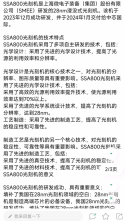Electronics in weapons do not yet need sub 14nm chips. They probably will never do to be resilient in harsh envs (high temperatures, exposure to strong electromagnetic fields/cosmic rays, etc). But the super computers in labs on ground, AI or not, can benefit tremendously from having chips of such high NA processes for speed and power efficiency. Super computers are of course critical in military, directly or indirectly.I have a few questions about the Chinese semiconductor industry, if anyone is interested in answering.
1) It seems that sub 14nm chips have been talked about a great deal regarding the Chinese semiconductor industry. Are there any real defense applications of such technology?
2) What are the motivations of the US to prevent China from producing sub 14nm chips? From a layman's view it seems that all the US has done is cut off its own access to a sizable market.
The true motivation of the US is probably not just in military but across the board to keep China a few generations behind in semiconductors therefore dependent on the western technologies forever.


